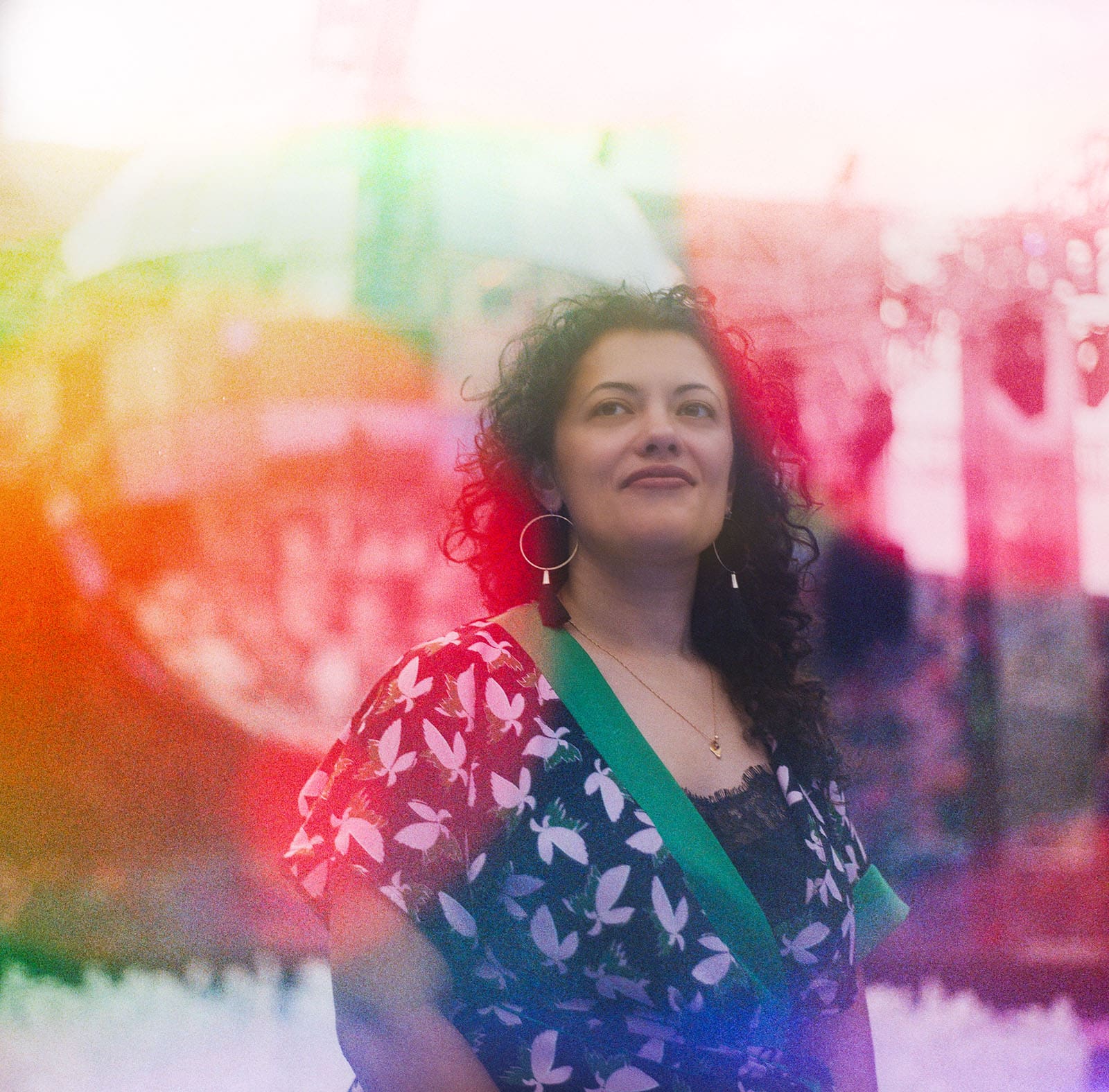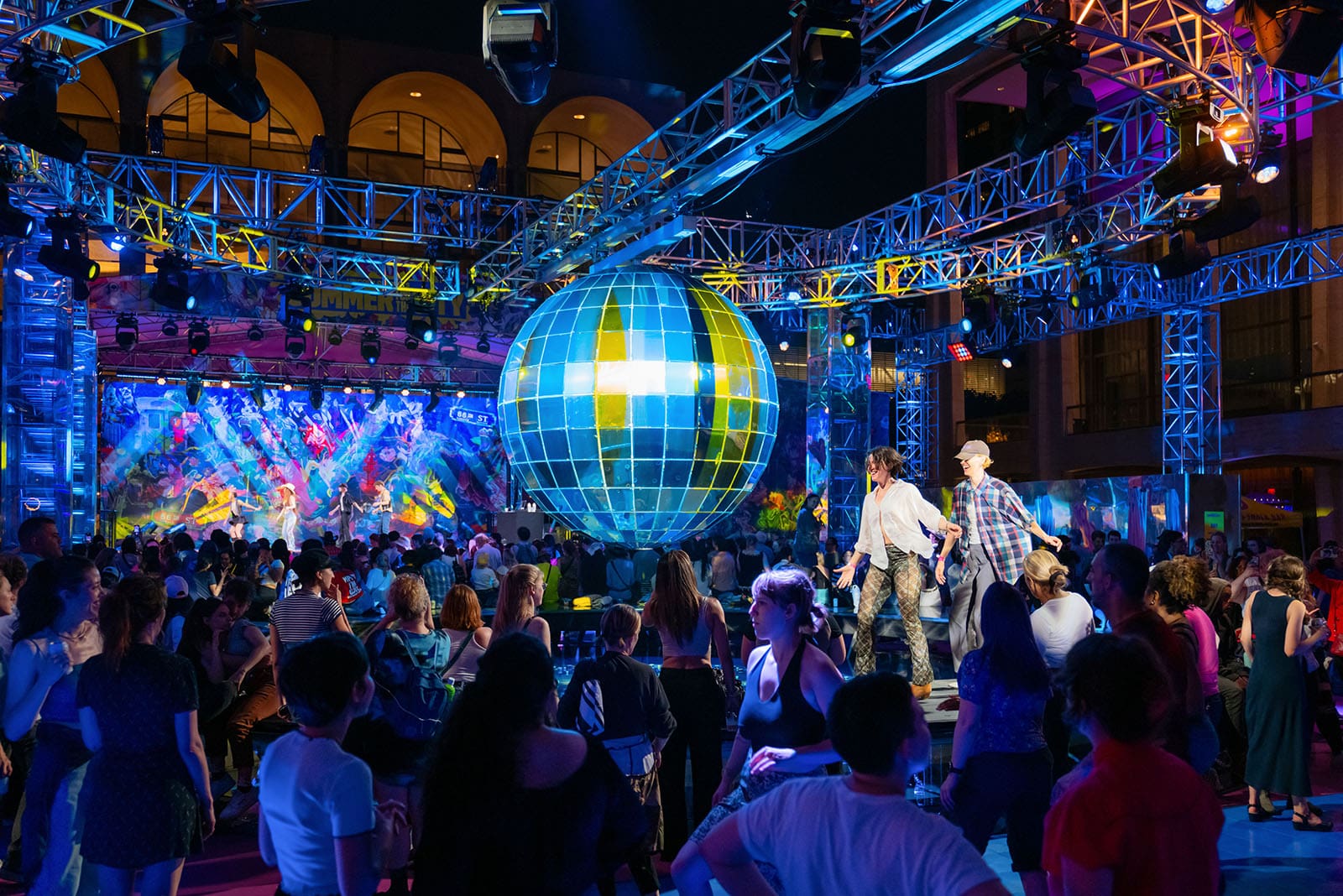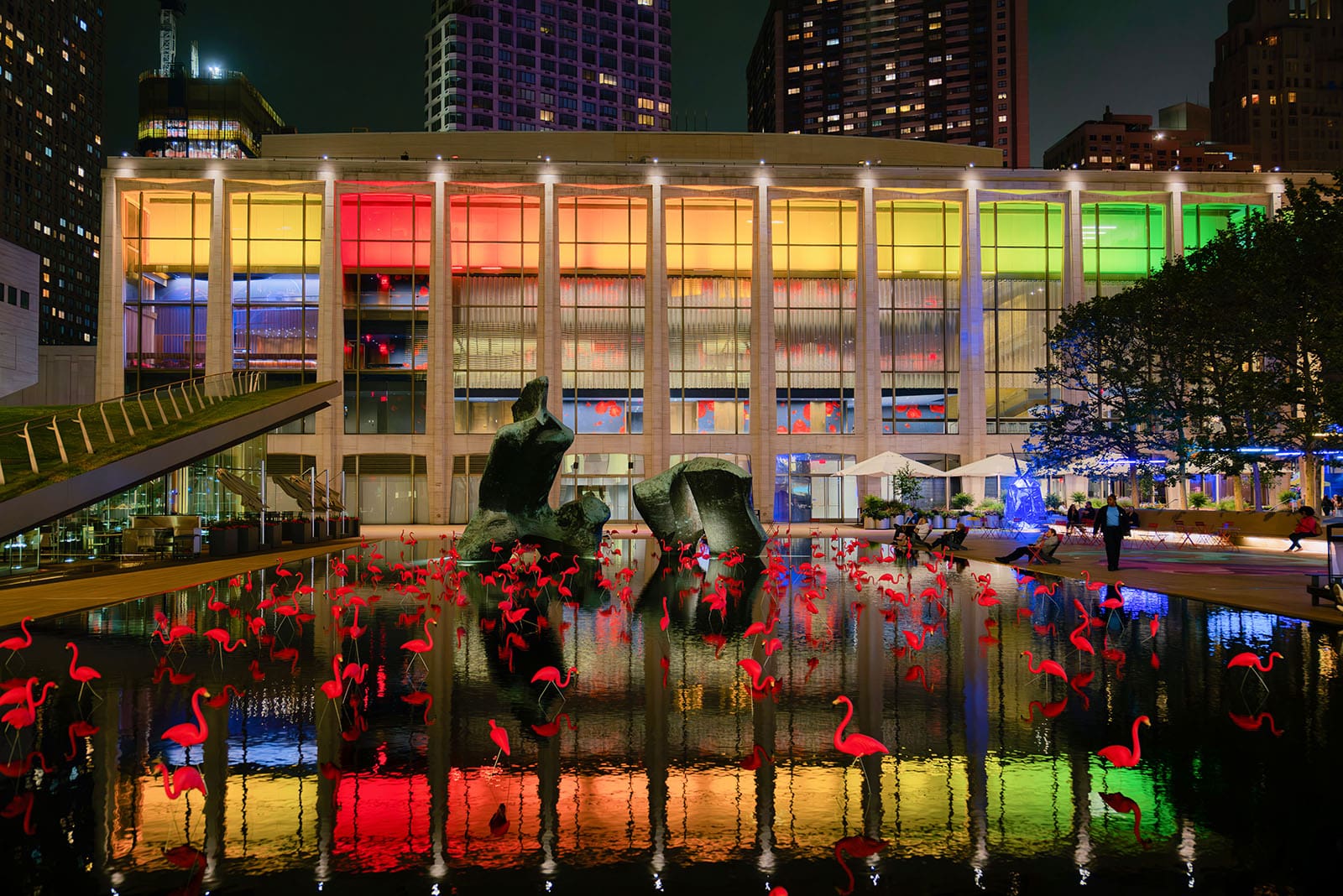200 installations of hot pink flamingos fill Hearst Plaza. Photo by Lawrence Sumulong, courtesy of Lincoln Center.
The festival transforms the Lincoln Center campus into a space where New Yorkers can “be close to each other once again.”
As the sun shines its brightest on New York City this summer, it simultaneously marks the return of Lincoln Center’s two-month-long festival—Summer for the City. From June 14 to August 12, the festival becomes a melting pot of New York’s cultural communities, attracting art enthusiasts, culture seekers, and families to join in the diverse offerings of free events hosted throughout the summer.
Under the leadership of Chief Artistic Director Shanta Thake, paired with the imaginative designs of acclaimed Filipino-American costume and set designer Clint Ramos, this year’s Summer for the City ensures to attract old and new audiences with a wide variety of programs: evening silent discos, a weeklong celebration of the Korean culture, a non-legally binding mass wedding ceremony for 500 couples, and more.


As Thake carefully curates each program in the festival, she maintains that the essence of Summer for the City lies mostly in evoking a sense of belonging and community among attendees, especially post-COVID. “You want to see people not just coming to shows but actually interacting with one another, you know, really participating and touching,” she shares. At night, the space transforms into a sea of synchronized movement as attendees put on wireless headphones and dance the night away with one another on New York’s largest outdoor dance floor.

Coupled with Thake’s captivating programs, the allure of Summer for the City lies in Ramos’s ingenious designs that transform Lincoln Center into a place where art and imagination intersect. Similarly, the pandemic inspired his designs and the longing people had to come together.
Ramos explains the pandemic as a driving force for his installations, especially when building the central gathering place and dance floor known as The Oasis: “It was based on this idea that, you know, after a period of drought, there was this oasis, there was this place that people can go to, to celebrate, to look at one another, and to be close to one another once again,” he says.
This year, Ramos’ nature-themed designs celebrate the collective resilience of the city, and how New York has surpassed such a period of uncertainty and isolation with optimism. “We looked at this idea of growth, of blooming, and of color,” Ramos shares. “We have this idea of fruits, we have these ideas of flowers, and just really an exuberant kind of joyful space.”

Colors of pink and green fill the Lincoln Center campus, along with 200 installations of flamingos that transport attendees into a lush greenery and tranquil sanctuary. Included in the public spaces he created for this year’s festival are The Garden (an outdoor area of relaxation and reflection), The Playroom (a haven of playful creativity hosting various art installations), and The Kitchen (a delectable space that celebrates the diverse culinary delights of New York City).
With last year’s Summer for the City attracting over 300,000 attendees, this year aims to attract even more people by prioritizing inclusivity and accessibility through its programs and public amenities. The magic of Summer for the City, Thake says, is ultimately creating an experience in service of the people and the city by drawing on the transformative power of the arts. “If we can make it feel for people that this is an extension of their life in New York, an extension of their home, that I think is the most important thing for the festival,” she says.

